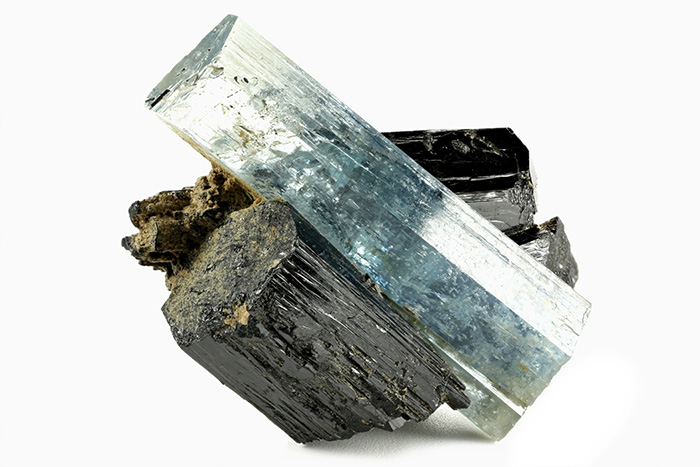The study of crystallography can be quite overwhelming, and without first obtaining a degree in Science is difficult to grasp. Here we have tried our best to simply explain exactly how crystals are formed.
Firstly, it is important to understand that most coloured gems are also minerals, with the exception of those that are organic. In this context, the term 'organic' refers to materials produced by organisms which have been cut into gems and other objects.
Common examples of organic gemstones include:
Secondly, take it as a fact that most minerals occur as crystals.

In a nutshell, crystals are formed when billions and billions of tiny atoms link together in a precise three-dimensional pattern - a pattern which repeats itself over and over again. So, how do they grow?
In the beginning, a few atoms start to hang about together - not on street corners, but usually in water-based solutions or molten rock in fissures and cavities. Over time, as the environment around them changes, they start to connect with each other in bigger and bigger clusters. Each new atom that joins the group must join in a precise way, and those that follow must also be identically locked in.
When other groups of crystals start to grow in the same space, they stunt each other’s growth and prevent them from forming into beautiful gemstones. The result of this is not a valuable mineral waiting to be discovered by gem hunters, but nothing much more than an igneous rock.
But what eventually happens to those rare clusters of atoms that actually manage to keep space around them?

The lucky groups that find themselves in the right temperature zone, experience just the right amount of pressure, gain a steady recruitment of like-minded atoms and join at just the right rate over a period of thousands of years, might just turn into something extraordinary.
If each and every one of these different criteria are met, they stand the chance of evolving into one tiny fraction of the Earth's crust (approximately one hundredth billionth) that could be proudly worn on your finger. However, the odds of a fully-formed crystal being of jewellery-setting quality diminish even further than this.
What makes a gemstone suitable for jewellery?

For a gem setter to be confident that it's suitable for jewellery, the crystal needs to be free of major faults and hard enough to withstand the cutting process. This doesn't mean the gemstone has to be indestructible (which is yet to be proved possible), but it should never be too brittle to break.
The crystal also needs to be large enough to be set into jewellery and, above all, it needs to be attractive. These additional factors deny the majority of the 4000 plus minerals identified to date to obtain the gemstone title. So, as you can hopefully now appreciate, gemstones really are as rare as we explain them to be.
Crystals are a fascinating natural phenomenon and, as the heart and soul of our business, we understand and appreciate the painstaking natural process that each and everyone of them goes through to reach us. The journey that gemstones take before we discover them is truly remarkable, and there's little we love more than sharing these miracles with you.
SHOP OUR ENTIRE COLLECTION

